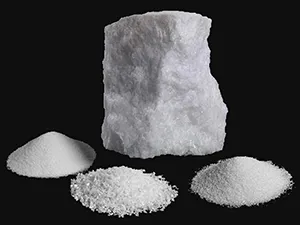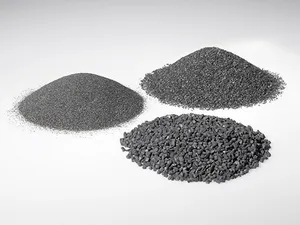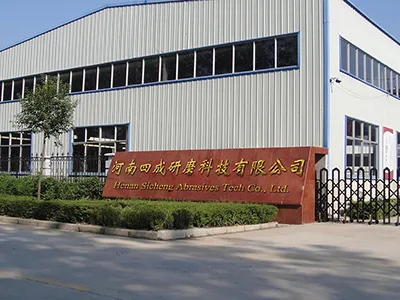Customers often encounter challenges where the surfaces of their work pieces are contaminated with dyes, paints, rust, oxides, or other stubborn residues that are difficult to remove. These stains not only affect the aesthetics of the objects but may also compromise their performance and interfere with subsequent processing stages.
Our team of professional technicians visited the customer's site for on-site consultations. After careful assessment, it was concluded that initial sandblasting treatment using 16# brown fused alumina effectively removed surface rust stains. Subsequent sandblasting with 150# white fused alumina achieved the desired matte finish, with minimal surface roughness, facilitating subsequent painting operations. Following testing, sandblasting time was halved, significantly improving efficiency, and material lifespan increased from 2 reuses to 8, resulting in substantial material savings.
This case utilized white fused alumina and brown fused alumina. However, product selection may vary for different situations and clients, this includes black silicon carbide, green silicon carbide, chrome alumina, zirconia fused alumina, and glass beads.

White fused alumina is produced from high-quality aluminum oxide powder, refined and crystallized through electric arc smelting.

Brown fused alumina is produced by melting high-quality bauxite, iron filings, and anthracite in an electric arc furnace at high temperatures.

Zirconia fused alumina is produced by melting aluminum oxide and zirconium oxide in an electric arc furnace at temperatures above 2000°C.

Pink aluminum oxide or ruby aluminum oxide is made by aluminum oxide powder, which is electrically fused at high-temperature by adding appropriate amount of chromium oxide, etc.
Black silicon carbide is produced by smelting quartz sand, petroleum coke (or coal coke), wood chips, and other raw materials in a resistance furnace.
Green silicon carbide is made from petroleum coke and high-quality silica, with salt added as an additive, and refined in a high-temperature resistance furnace.

Green silicon carbide is made from petroleum coke and high-quality silica, with salt added as an additive, and refined in a high-temperature resistance furnace.

The working environment inside high-temperature kilns is extremely harsh.

Casting sand can be used to fill molds or create cores, allowing for the manufacture of metal parts in various shapes and sizes.

The working environment inside high-temperature kilns is extremely harsh.

Founded in 1999, our factory has been specializing in abrasive production for over 20 years. Covering an area of 7,500 square kilometers, our monthly production capacity reaches 8,000 tons.

At Sicheng Abrasives, we utilize state-of-the-art laboratory testing equipment to maintain strict control over chemical composition, purity, and crystal structure.

Henan Sicheng Abrasives Tech Co., Ltd. was founded in 2010 as a technology-driven enterprise specializing in the production, research, development, and sales of a diverse range of abrasive materials, refractory materials, and foundry materials.